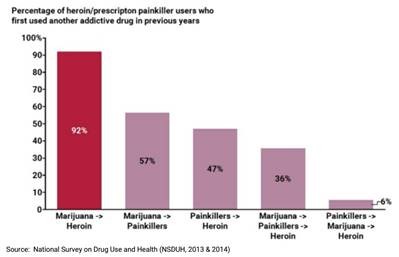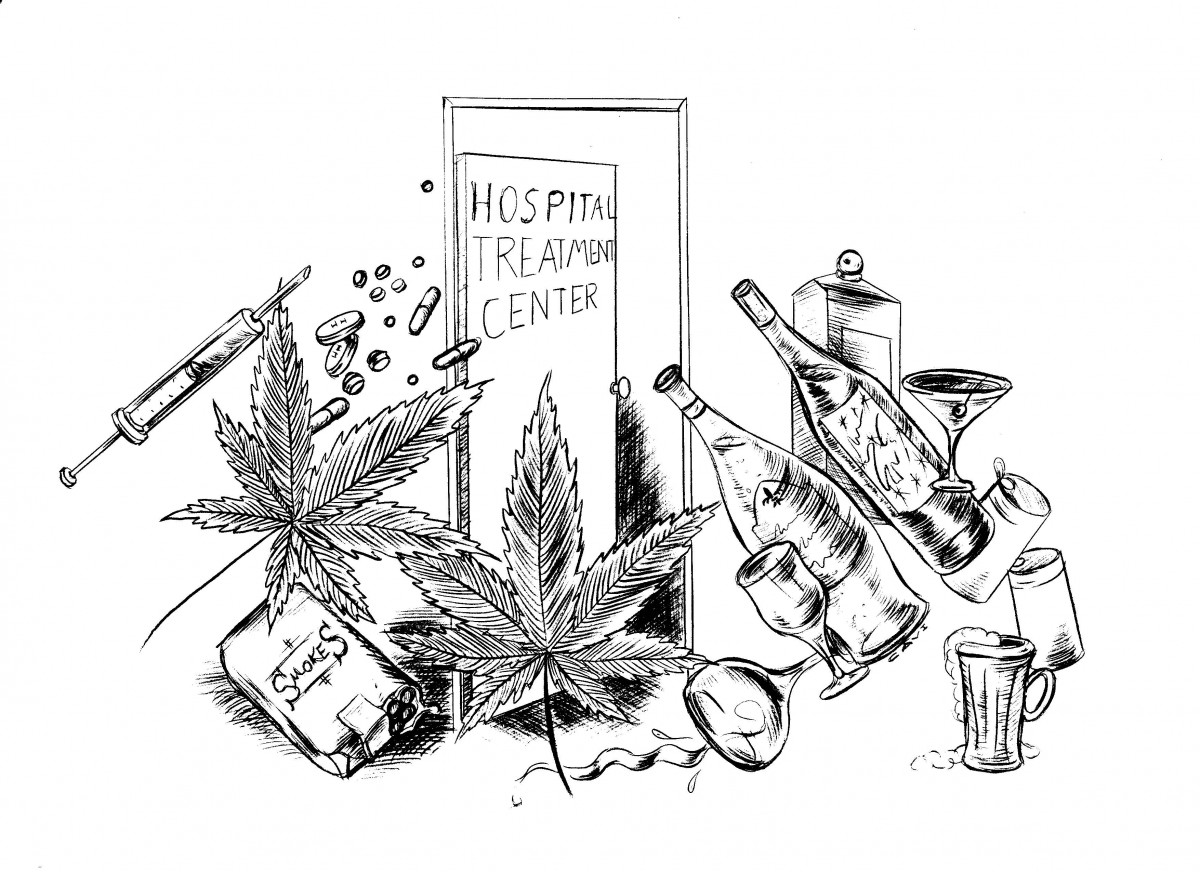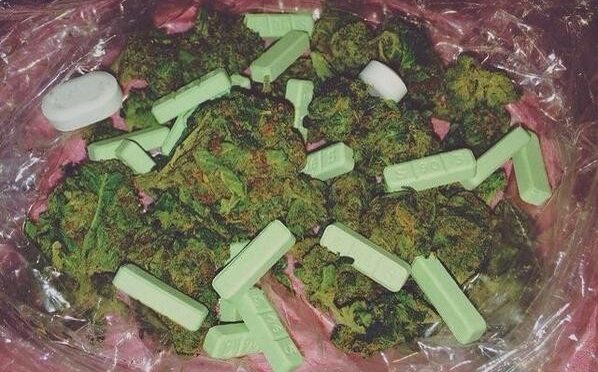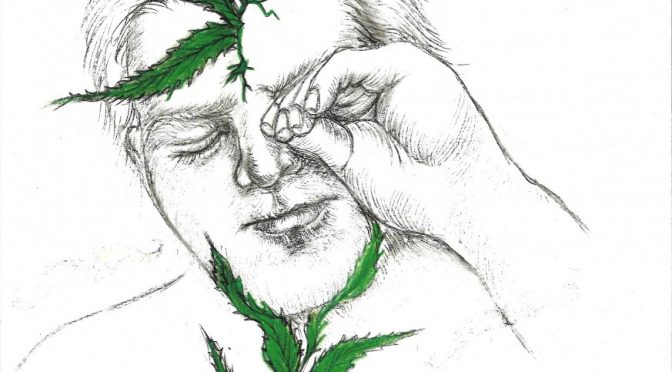For teens and college students, it’s a trend to add Xanax to their marijuana. Xanax is an anti-anxiety medication classified as a benzodiazapine. Some who use Xanax have real anxiety. Because “medical” marijuana activists advertise marijuana as a treatment for anxiety, some people use marijuana to deal with anxiety. Continue reading Teens, college students, young adults add Xanax to their marijuana
Category Archives: Addiction
Addicted to Weed? How I Suddenly Came to Realize the Truth
Addicted to Weed? in The Fix on July 19, 2017
There was so much misinformation about marijuana that I was willing to doubt anything negative, even if it was backed by hard science. Then I got a brain scan.
I’d always been told that marijuana addiction was impossible, that it was a harmless herb with only medicinal properties.
I have about a month of sobriety under my belt. I still wake up most days after dreams where I spark a bowl or drop some acid thinking that sobriety is too much, that it isn’t doable, not for me. Continue reading Addicted to Weed? How I Suddenly Came to Realize the Truth
Marijuana and Other Drugs: A Link We Can’t Ignore
by SAM (Smart Approaches to Marijuana) Smart Approaches to Marijuana’s 2017 publication references academic studies which suggest that marijuana primes the brain for other types of drug usage. Here’s the summary on that subject from page 4, Marijuana and Other Drugs: A Link We Can’t Ignore :
MORE THAN FOUR in 10 people who ever use marijuana will go on to use other illicit drugs, per a large, nationally representative sample of U.S. adults.(1) The CDC also says that marijuana users are three times more likely to become addicted to heroin.(2)

And according to the seminal 2017 National Academy of Sciences report, “There is moderate evidence of a statistical association between cannabis use and the development of substance dependence and/or a substance abuse disorder for substances including alcohol, tobacco, and other illicit drugs.”(3)
RECENT STUDIES WITH animals also indicate that marijuana use is connected to use and abuse of other drugs. A 2007 Journal of Neuropsychopharmacology study found that rats given THC later self administered heroin as adults, and increased their heroin usage, while those rats that had not been treated with THC maintained a steady level of heroin intake.(4) Another 2014 study found that adolescent THC exposure in rats seemed to change the rodents’ brains, as they subsequently displayed “heroin-seeking” behavior. Youth marijuana use could thus lead to “increased vulnerability to drug relapse in adulthood.”(5)
National Institutes of Health Report
The National Institutes of Health says that research in this area is “consistent with animal experiments showing THC’s ability to ‘prime’ the brain for enhanced responses to other drugs. For example, rats previously administered THC show heightened behavioral response not only when further exposed to THC, but also when exposed to other drugs such as morphine—a phenomenon called cross-sensitization.”(6)

ADDITIONALLY, THE MAJORITY of studies find that marijuana users are often polysubstance users, despite a few studies finding limited evidence that some people substitute marijuana for opiate medication. That is, people generally do not substitute marijuana for other drugs. Indeed, the National Academy of Sciences report found that “with regard to opioids, cannabis use predicted continued opioid prescriptions 1 year after injury. Finally, cannabis use was associated with reduced odds of achieving abstinence from alcohol, cocaine, or polysubstance use after inpatient hospitalization and treatment for substance use disorders” [emphasis added].(7)
Moreover, a three-year 2016 study of adults also found that marijuana compounds problems with alcohol. Those who reported marijuana use during the first wave of the survey were more likely than adults who did not use marijuana to develop an alcohol use disorder within three years.(8) Similarly, alcohol consumption in Colorado has increased slightly since legalization. (9)
Data on Marijuana Policy for 2017
Here’s the complete Data on Marijuana Policy for 2017 in pdf form.
FOOTNOTES:
- Secades-Villa R, Garcia-Rodríguez O, Jin CJ, Wang S, Blanco C Probability and predictors of the cannabis gateway effect: a national study. Int J Drug Policy. 2015;26(2):135-142
2. Centers for Disease Control. Today’s heroin epidemic Infographics more people at risk, multiple drugs abused. CDC, 7 July 2015.
3. National Academies of Sciences, Engineering, and Medicine; Health and Medicine Division; Board on Population Health andPublic Health Practice; Committee on the Health Effects of Marijuana: An Evidence Review and Research Agenda (“2017 NAS Report”).
4. Ellgren, Maria et al. “Adolescent Cannabis Exposure Alters Opiate Intake and Opioid Limbic Neuronal Populations in Adult Rats.”Neuropsychopharmacology 32.3 (2006): 607–615.
5. Stropponi, Serena et al. Chronic THC during adolescence increases the vulnerability to stress-induced relapse to heroin seeking in adult rats. European Neuropsychopharmacology Volume 24 , Issue 7 (2014), 1037 – 1045.
6. “Is marijuana a gateway drug?” National Institute on Drug Abuse. Jan. 2017. See also Panlilio LV, Zanettini C, Barnes C, Solinas M, Goldberg SR. Prior exposure to THC increases the addictive effects of nicotine in rats. Neuropsychopharmacol Off Publ Am Coll Neuropsychopharmacol. 2013;38(7):1198-1208; Cadoni C, Pisanu A, Solinas M, Acquas E, Di Chiara G. Behavioural sensitization after repeated exposure to Delta 9-tetrahydrocannabinol and cross-sensitization with morphine. Psychopharmacology (Berl). 2001;158(3):259-266.
7. 2017 NAS report.
8. Weinberger AH, Platt J, Goodwin RD. Is cannabis use associated with an increased risk of onset and persistence of alcohol use disorders? A three-year prospective study among adults in the United States. Drug Alcohol Depend. February 2016.
This is the second recent article on the gateway effects of marijuana use. Since marijuana has already primed the brains of most people who get addicted to opioids, marijuana cannot replace pain pills.
Marijuana Can’t Substitute for Pain Pills
The pot industry pushes marijuana use as a substitute for pain pills. With a massive Public Relations effort, it uses the media to do its bidding. However — upon closer examination — the opiate and heroin epidemic mirror the legalization of marijuana.
The Opioid Commission headed by Governor Chris Christie should not pause one second to consider marijuana as a substitute for pain medication. Save Our Society from Drugs asks that we petition this group not to consider marijuana as a treatment for pain.
Why So Much Chronic Pain?
Not everyone who becomes addicted to opiates started because of pain. Those under age 35 who are dying from drug abuse at an unprecedented rate, often started abusing drugs just for fun.
People usually don’t get addicted to opiates by taking them as pain medications, according to Jon Daily, of Recovery Happens, outpatient addiction treatment centers in California. He explains that the pain pills given after surgery and taken as prescribed, won’t produce a high for most people. However, there’s a subset of people who respond differently and feel euphoria. The difference for these people may be that they’re responding to unresolved issues of painful experience earlier in their lives.
Dr. Libby Stuyt, addictions psychiatrist and advisor to Parents Opposed to Pot said: “Most patients with chronic pain issues find that holding onto emotional pain from past trauma comes out in the form of physical pain. When they work through this and are able to let go, the physical pain greatly diminishes.”
Too much medical intervention and surgery is also an issue. Ten years ago Shannon Brownlee wrote Overtreated: How Too Much Medicine is Making us Sicker and Poorer, and now people are noticing that overtreatment create problems.
A wise Chinese doctor said: “When a body has an imbalance, which is displayed in the form of some or other dis-ease, it will continue to display this imbalance. If we cut out the place where that imbalance is currently occurring, then chances are, it will simply move to the next area of the body.” It could be that unnecessary surgeries and too many surgeries contributed to chronic pain and the addiction problem.
Why People Get Addicted to Opiates
According to Jon Daily, most people in his practice begin pain pill abuse because they were already using alcohol and marijuana. Their relationship with getting intoxicated began through these substances. It is why Daily recommends an addiction paradigm shift away from heroin to marijuana.
Studies show that only about six percent of the population gets addicted to pain pills after surgery. A recent study shows that states with the highest drug abuse are also the states that have legalized marijuana.
Overprescribing by doctors was a major issue in the past, but it is not the major issue today. If pot is recommended as an alternative to avoid opioid addiction, it will probably be the same pill mill doctors who will be giving such recommendations.
We believe the future of pain medicine is not prescribing marijuana, but in utilizing alternatives that treat the root of the pain. Some of these techniques may need to be combined with Dialectical Behavior Therapy or Cognitive Behavior Therapy and spiritual help. Cannabis, a psychotropic plant, is anything but “natural.”
Marijuana lobbyists have played a trick on America’s children by using the green pharmaceutical cross and pretending to be doctors. They insist marijuana is “not a gateway” drug, but studies show otherwise.
Let’s push back on the pot industry’s promotion of marijuana as a cure-all drug and the media’s advocacy on their behalf. Remember, “medical” marijuana was planned as a hoax.
The United States uses 80 percent of the world’s opiate pain pills. The United States and Canada have 56% of the world’s illegal drug users. Polydrug use is the rule today and marijuana is usually part of the drug cocktail.
Prevention and Treatment
There are many other ways to treat the opiate epidemic: better prevention programs; mandating education in the schools; clamping down on internet sellers of these drugs, and reversing America’s constant craving to be high.
As for using drugs to treat an addiction, this practice is questionable. What works for some will not work for others. Perhaps long-acting naltrexone (Vivitrol) which blocks the effects of opiates, and apparently the craving, can help. Let’s hope Governor Christie’s Commission devises some good recommendations.



